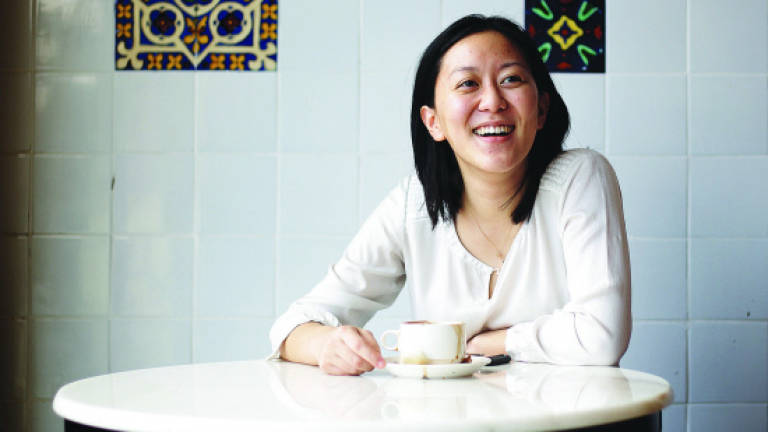Next Gen - Heritage Matters

FOR Peggy Lim Bay Gie, finding the right balance between the old and new is crucial to the preservation of our heritage.
The 27-year-old thinks it's important to preserve our heritage for the sake of the future generation, so that they will know where we come from, and how hard our forefathers had worked to build it.
Her preservation projects are based in Ipoh, her hometown.
One of her biggest projects to date is the Sarang Paloh Heritage Stay, where guests can feel homey Ipoh-style, with furnishings that are 100% Malaysianmade.
"It took us four years to complete the renovations in Sarong Paloh before its launch in 2015. It's made up of four shoplots that were unwanted and doomed to be demolished," shared Lim.
Her family managed to purchase these few lots, and began refurbishment works on one of the smaller lots next to Sarang Paloh, which became the Lim Ko Pi coffee shop that serves authentic Ipoh fare.
The responsibility of owning an old building rests on its buyers, Lim explained. "We had to find a way to turn these buildings into a relevant and sustainable business, otherwise the objective of preservation would be lost."
How did you get involved in heritage preservation projects?
It started when my family bought over these old buildings. After completing my master's, I came home and picked up the Lim Ko Pi project.
My sister was working on it initially, but had to leave in order to pursue her PhD. I took over and never looked back.
Why is preserving old buildings so important to you?
Buildings are one of the most important cultural landmarks that you can never recreate once they're gone.
They become abandoned because their owners no longer want to take the effort to make them relevant.
They may be bricks and mortar, but they have souls; and like everything else in life they require constant upgrading.
In your opinion, what is Malaysia's biggest problem when it comes to preserving old buildings?
I believe that most of the owners of these old buildings do not value them as much as they value their own houses.
This leads to neglect and eventually, demolition. How did the name Sarang Paloh come about?
'Sarang' means nest, and 'paloh' was what people from my grandmother's generation called the city before it was named Ipoh. The name is inspired by my family's love for travel – we are never in the same place for long, but Ipoh always feels like home (nest).
How did you recreate an authentic Ipoh heritage atmosphere in Sarang Paloh?
First of all, we avoided having any nyonya-inspired furniture – mainly because Ipoh is originally a Chinese community.
We sought after people who did not want their old furniture, and recycled the latter into new pieces.
We also collected tiles from old or demolished buildings. For the beds, we use only 100% latex that is Malaysianmade, along with everything else.
What were some of the challenges you faced bringing Lim Ko Pi to the Klang Valley?
It wasn't as challenging as when I worked on the very first branch in Ipoh – mostly because it was a matter of copy-and-paste for the second branch.
However, I am facing some difficulties acquiring reliable manpower!
Where can we find you when you're not working on your projects?
I've not taken a day off in the last six months, to be honest, but I love to travel. Just last year I was in Milan with my sister.
I thoroughly enjoy places where I can learn a new culture and absorb all sorts of new information.
Lastly, do you think you would retire in Ipoh?
Actually, no. I would like to retire in Bhutan because it is a carbon-negative country and in my opinion, it has a great community that cares about the environment.